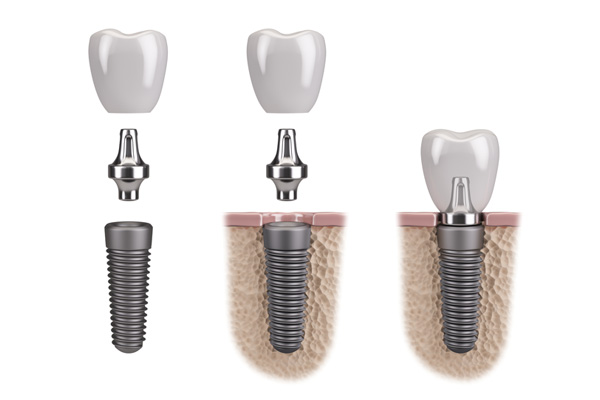Important Facts About Dental Sealant Placement

Dental sealant placement forms a barrier between the teeth and the substances that can cause tooth decay. It is a powerful tool to prevent tooth decay, especially in children. However, it is not a substitute for good oral hygiene. Patients with sealants still need to brush and floss on a daily basis and see a dentist for checkups regularly.
Frequently asked questions about dental sealant placement
If you are a parent considering dental sealants for your child, here are some things that you need to know.
Which teeth can receive sealants?
Sealants are applied to the molars, which are the teeth in the back of the mouth. These teeth are often more difficult to keep clean because they are difficult to reach with a toothbrush and floss and because they have pits and grooves in which food particles can get stuck and bacteria can grow.
How do sealants protect against cavities?
Sealants fill in the pits and grooves, making the surface of the tooth smoother. This prevents food particles from getting stuck and denies harmful bacteria a hiding place.
Who can benefit from dental sealants?
Sealants are most often performed on children and adolescents to protect their newly erupted molars. If desired, the treatment can continue into adulthood.
How common are dental sealants?
According to the Centers for Disease Control and Prevention, nearly half of all adolescents aged 12 to 19 years, 48%, had dental sealant placement from 2011 to 2016, as well as 42% of all children aged 6 to 11. In either case, over half of all children did not have sealants.
Not only are more children overall receiving dental sealants but the gap between lower-income children and higher-income children receiving sealants has narrowed. However, there is still an economic disparity, with fewer lower-income children receiving sealants than their higher-income counterparts.
What is the process of dental sealant placement?
The first step is to clean the tooth and make sure it is thoroughly dry. The tooth is prepared with the application of a blue solution that helps the sealant adhere to the tooth's surface by making microscopic pores in it. After rinsing and drying the tooth, the sealant is painted on and cured with air or a special light. The process is not painful, and there is no need to numb the mouth when receiving dental sealants.
How long do dental sealants last?
There have been instances in which sealants were still intact and working up to nine years after initial application. However, it is a good idea to have a dentist inspect them frequently. Sealants can be reapplied as needed if they fall off or lose their effectiveness.
How effective are sealants?
According to the Connecticut Department of Public Health, sealants are 90% effective when first placed and for up to two years thereafter. Though they can lose effectiveness over time, they still protect against 50% of cavities for four years following initial applications. To maximize the protection that your child receives from sealants, you should have them reapplied every two to four years or as recommended by your dentist.
Are sealants visible?
Sealants can be white or slightly tinted in color, or they may be completely clear. In any case, they are only applied to the back teeth, which are less visible in the mouth when talking or smiling. You may be able to tell that your child has sealants when you look in their mouth, but casual observers probably will not notice them.
Do teeth with sealants feel different?
After your child first gets sealants, they may be able to feel them with their tongues at first. Before long, they will get used to the feeling and not notice it anymore.
What happens if children do not get sealants?
Children who do not receive sealants are at greater risk for cavities and tooth decay. This can cause problems with speaking and eating. It can cause mouth pain that can prevent children from learning by distracting them in school.
It is not a foregone conclusion that a child without sealants will develop tooth decay in the molars. Good oral hygiene, e.g., brushing at least twice a day and flossing at least once, may be enough to prevent this. However, the combination of good oral hygiene and dental sealants can reduce the risks of tooth decay significantly.
Conclusion
Dental sealant placement is an easy and relatively inexpensive way to protect your child's teeth from decay during the time that they are otherwise most prone to develop cavities.
Request an appointment here: https://www.lilburnfamilydentistry.com or call Lilburn Family Dentistry at (770) 800-0178 for an appointment in our Lilburn office.
Check out what others are saying about our dental services on Yelp: Dental Sealants in Lilburn, GA.
Recent Posts
Dental sealants are a great prevention tactic that many dentists recommend today. Your dentist wants your teeth to remain healthy and cavity-free for as long as possible. We all want to do whatever is necessary to maintain our natural teeth and keep our smiles bright. Our natural teeth are put through a lot if you think…
Proper hygiene techniques and regular dental checkups are a great defense against tooth decay, but what if they are not quite enough? Enter dental sealants. Getting tooth sealants can also greatly assist in the tooth decay battle. Continue reading for more insight into this treatment option and how it can be an effective tool for…
Dental sealants are a non-invasive preventive treatment and do not take long for dentists to apply. Understanding the dental sealant process can help you feel more confident and comfortable with the procedure. This guide offers an overview of what you can expect during the placement of dental sealants.Most dentists follow a similar process for dental…
Dental sealants are thin coatings that your dentist can place on your child’s teeth. These are usually placed on the back teeth because there are more grooves on them. The sealant is thin enough that it will mold to the surface of the tooth. This provides a snug fit. Keep reading to learn more about…


